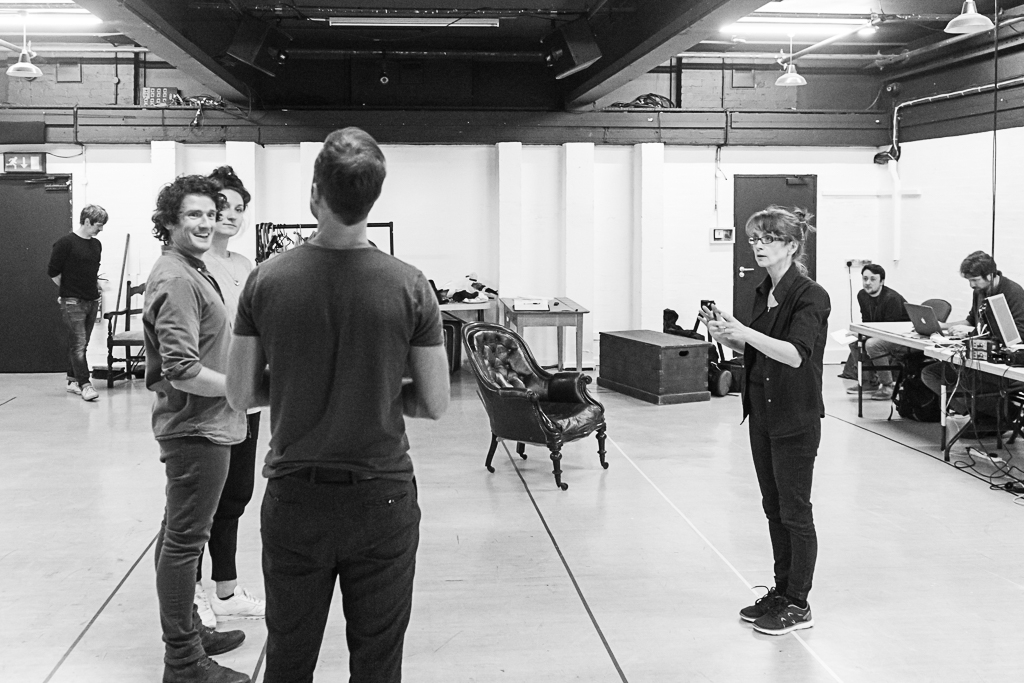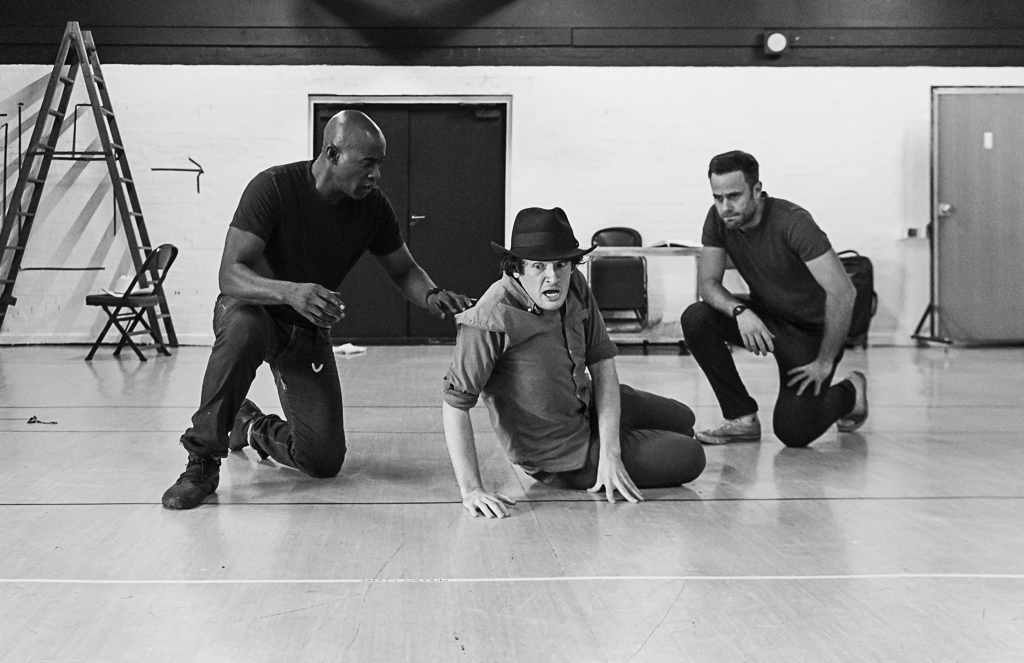Baskerville Rehearsal Blog // Week One
‘I consider that a man's brain originally is like a little empty attic, and you have to stock it with such furniture as you choose.’
- Sir Arthur Conan Doyle
There is a lot of baggage that comes with adapting a well loved story for the stage; especially when that well loved story has been told umpteen times on film, television and indeed on the stage itself. In fact, so popular is Baskerville, Ken Ludwig’s farcical incarnation of Sir Arthur Conan Doyle’s macabre classic, that there were over thirty professional productions in the U.S.A last year alone. No pressure then.
![Jay Taylor [Sherlock Holmes]. Baskerville in rehearsal. Photograph by Brian Roberts. Jay Taylor [Sherlock Holmes]. Baskerville in rehearsal. Photograph by Brian Roberts.](https://www.everymanplayhouse.com/sites/default/files/styles/homepage_first_220x380/public/~0034_Baskerville%20B%26W%20%28web%29-0776.jpg?itok=EIHIuZnJ)
Baskerville is a fast paced, madcap, full throttle, thriller, with a tiny cast of actors but a curiously ambitious character list. In fact, three of the actors play in excess of ten characters each. The intention is to fully immerse the audience in the world of Sherlock Holmes and Doctor Watson and all of the fabulous characters that they encounter, but also enjoy the theatrical devices that such a small company must employ in order to fully populate Victorian London and a wider variety of locations. The script dictates that we must visit a myriad different locales, from Holmes and Watson’s infamous abode at 221b Baker Street, to The Northumberland Hotel; from the enormous and imposing stately home Baskerville Hall, to the bleak boggy moors of Devonshire, to name but a few.
Whilst myself and Patrick Robinson have the honour of playing the iconic roles of Holmes and Watson respectively, Edward Harrison, Bessie Carter and Ryan Pope have most of the heavy lifting to do in their various multi-role performances, sometimes appearing as two characters in the same scene, and sometimes even in the same conversation. ‘How will that work, then?’ I hear you ask. ‘The magic of theatre?’ The truth is, we’re not quite sure yet, but the three of them attack the accents, physicality and vocal differentiation of their numerous roles with aplomb. The technicalities of how to achieve lighting quick changes or talk to oneself in a scene will come later. But that sort of investigation is very much at the heart of what the director Loveday Ingram and the company envisage for this piece. It should be industrious and anarchic, chaotic and imaginative. Thinking outside the box is highly encouraged, though I’m not sure Steph Carter, our Deputy Stage Manager and the one responsible for cueing every lighting change, scene change and sound effect would agree. As we progress through the first two weeks of rehearsals, the cue list is already starting to resemble a classic Russian novel.

We spend the first few days doing ‘table work’; this is essentially tabled discussion about the backstory, relevant research or additional information that people may want to add into the mix as we read through the play in finer detail than we did at the initial read through. Essentially, it is a useful exercise in establishing what the logic of a scene is; why a character is there, what they want, where they have come from, and where they are going. All useful things to establish and this sort of work can help to add a rich dimension to characters and the narrative of the whole piece, but because of the intensely physical nature of ‘Baskerville’, Loveday has us up on our feet and blocking the first few scenes by day three. I, for one, am thrilled. I’m trying to find a way to
give Holmes an energy and vibrancy that simply can’t be found in a chair.
The work progresses well and Simon Daw our designer starts to introduce images of the set to the company not via the traditional small scale ‘model box’, but instead through a series of images that are projected onto the wall for us to gawp at. Projection, ironically, will form a significant part of this production’s design…but to say more would be giving too much of the magic away.
A lot of the work at this stage will probably bear very little resemblance to the work that the audience see on the stage of the Playhouse. It is very much an exercise in approximation; much like a sketch that a painter does before applying his colours to the canvas, we are giving ourselves a blueprint upon which to create more detailed and accurate work. But much like the man’s brain that Sir Arthur Conan Doyle talked of needing to be filled, we too must stock our ‘empty attic’ with the furniture that we choose. In our case, the furniture is literal and metaphorical, as doors and trunks and all manner of paraphernalia starts to filter in from our brilliantly industrious stage management and design team.

As rehearsals end for the week, we all go our separate ways feeling enthused and very excited about the project. The weekend in a city that one doesn’t know particularly well can be a lonely time, but we are offered an enormous amount of local knowledge by the Liverpudlians in the company. This is the first time I’ve really spent a significant amount of time in Liverpool and the first weekend presented an opportunity to explore. A few of us had a lovely time strolling up and down Bold Street and dinner at Mowgli was a real highlight. On Sunday we took a walk to the Baltic Market and had a drink at Ghetto Golf. I then took myself off for a roast at The Blackburne Arms, all of which represented a fairly eclectic but entirely satisfying Sunday in Liverpool. But then, inevitably, and to quote Mr. Holmes himself, ‘It seems the wheel has turned yet again. And so…it’s back to work.’